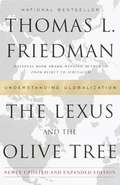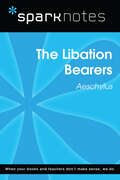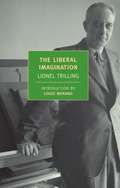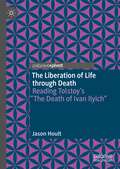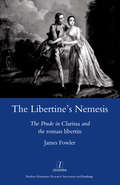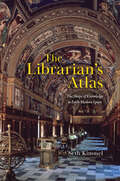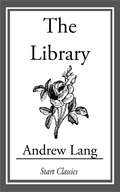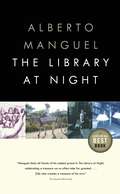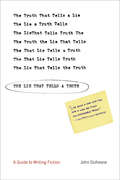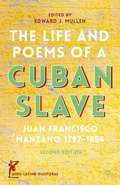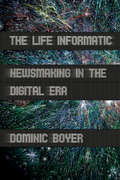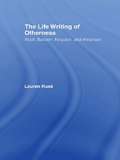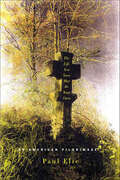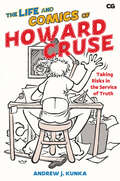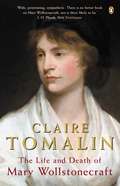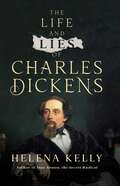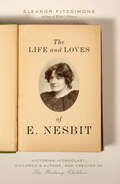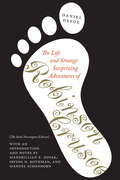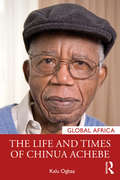- Table View
- List View
The Lexus and the Olive Tree: Understanding Globalization
by Thomas L. FriedmanFrom one of our most perceptive commentators and winner of the National Book Award, a comprehensive look at the new world of globalization, the international system that, more than anything else, is shaping world affairs today. As the Foreign Affairs columnist for The New York Times, Thomas L. Friedman has traveled the globe, interviewing people from all walks of contemporary life: Brazilian peasants in the Amazon rain forest, new entrepreneurs in Indonesia, Islamic students in Teheran, and the financial wizards on Wall Street and in Silicon Valley. Now Friedman has drawn on his years on the road to produce an engrossing and original look at globalization. Globalization, he argues, is not just a phenomenon and not just a passing trend. It is the international system that replaced the Cold War system; the new, well-greased, interconnected system: Globalization is the integration of capital, technology, and information across national borders, in a way that is creating a single global market and, to some degree, a global village. Simply put, one can't possibly understand the morning news or one's own investments without some grasp of the system. Just one example: During the Cold War, we reached for the hot line between the White House and the Kremlin--a symbol that we were all divided but at least the two superpowers were in charge. In the era of globalization, we reach for the Internet--a symbol that we are all connected but nobody is totally in charge. With vivid stories and a set of original terms and concepts, Friedman offers readers remarkable access to his unique understanding of this new world order, and shows us how to see this new system. He dramatizes the conflict of "the Lexus and the olive tree"--the tension between the globalization system and ancient forces of culture, geography, tradition, and community. He also details the powerful backlash that globalization produces among those who feel brutalized by it, and he spells out what we all need to do to keep the system in balance. Finding the proper balance between the Lexus and the olive tree is the great drama of he globalization era, and the ultimate theme of Friedman's challenging, provocative book--essential reading for all who care about how the world really works.
The Libation Bearers (SparkNotes Literature Guide Series)
by SparkNotesThe Libation Bearers (SparkNotes Literature Guide) by Aeschylus Making the reading experience fun! Created by Harvard students for students everywhere, SparkNotes is a new breed of study guide: smarter, better, faster. Geared to what today's students need to know, SparkNotes provides: *Chapter-by-chapter analysis *Explanations of key themes, motifs, and symbols *A review quiz and essay topicsLively and accessible, these guides are perfect for late-night studying and writing papers
The Liberal Imagination: Essays on Literature and Society
by Lionel TrillingThe Liberal Imagination is one of the most admired and influential works of criticism of the last century, a work that is not only a masterpiece of literary criticism but an important statement about politics and society. Published in 1950, one of the chillier moments of the Cold War, Trilling's essays examine the promise --and limits--of liberalism, challenging the complacency of a naïve liberal belief in rationality, progress, and the panaceas of economics and other social sciences, and asserting in their stead the irreducible complexity of human motivation and the tragic inevitability of tragedy. Only the imagination, Trilling argues, can give us access and insight into these realms and only the imagination can ground a reflective and considered, rather than programmatic and dogmatic, liberalism. Writing with acute intelligence about classics likeHuckleberry Finnand the novels of Henry James and F. Scott Fitzgerald, but also on such varied matters as the Kinsey Report and money in the American imagination, Trilling presents a model of the critic as both part of and apart from his society, a defender of the reflective life that, in our ever more rationalized world, seems ever more necessary--and ever more remote.
The Liberation of Life through Death: Reading Tolstoy’s “The Death of Ivan Ilyich”
by Jason HoultThis book undertakes to show how the exercise of reading Tolstoy’s “The Death of Ivan Ilyich” involves articulating for ourselves, as readers, what it means to liberate life through death. What Tolstoy’s short story shows us, the author argues, is that life can be truly liberated through death only when we see that death is neither a supernatural event nor a natural end but involves a work of love. In Part 1 of his study, the author addresses the common assumptions that give rise to the idea that religious and secular views of life and death are opposed in modernity. He also examines the history of values that Tolstoy’s story embodies. In Part 2, he analyses the life and death of Ivan Ilyich in order to show that the values that are embedded in Tolstoy’s story are at once religious and secular.
The Libertine's Nemesis: The Prude in Clarissa and the Roman Libertin
by James FowlerWhat is the role of the prude in the roman libertin? James Fowler argues that in the most famous novels of the genre (by Richardson, Crebillon fils, Laclos and Sade) the prude is not the libertine's victim but an equal and opposite force working against him, and that ultimately she brings retribution for his social, erotic and philosophical presumption. In a word, she is his Nemesis. He is vulnerable to her power because of the ambivalence he feels towards her; she is his ideological enemy, but also his ideal object. Moreover, the libertine succumbs to an involuntary nostalgia for the values of the Seventeenth Century, which the prude continues to embody through the age of Enlightenment. In Crebillon fils and Richardson, the encounter between libertine and prude is played out as a skirmish or duel between two individuals. In Laclos and Sade, the presence of female libertines (the Marquise de Merteuil and Juliette) allows that encounter to be reenacted within a murderous triangle.
The Librarian's Atlas: The Shape of Knowledge in Early Modern Spain
by Seth KimmelA history of early modern libraries and the imperial desire for total knowledge. Medieval scholars imagined the library as a microcosm of the world, but as novel early modern ways of managing information facilitated empire in both the New and Old Worlds, the world became a projection of the library. In The Librarian’s Atlas, Seth Kimmel offers a sweeping material history of how the desire to catalog books coincided in the sixteenth and seventeenth centuries with the aspiration to control territory. Through a careful study of library culture in Spain and Morocco—close readings of catalogs, marginalia, indexes, commentaries, and maps—Kimmel reveals how the booklover’s dream of a comprehensive and well-organized library shaped an expanded sense of the world itself.
The Library
by Andrew LangAndrew Lang (1844-1912) was a prolific Scots man of letters, a poet, novelist, literary critic and contributor to anthropology. He now is best known as the collector of folk and fairy tales. He was educated at the Edinburgh Academy, St Andrews University and at Balliol College, Oxford. As a journalist, poet, critic and historian, he soon made a reputation as one of the ablest and most versatile writers of the day. Lang was one of the founders of the study of "Psychical Research," and his other writings on anthropology include The Book of Dreams and Ghosts (1897), Magic and Religion (1901) and The Secret of the Totem (1905). He was a Homeric scholar of conservative views. Other works include Homer and the Epic (1893); a prose translation of The Homeric Hymns (1899), with literary and mythological essays in which he draws parallels between Greek myths and other mythologies; and Homer and his Age (1906). He also wrote Ballades in Blue China (1880) and Rhymes la Mode (1884).
The Library at Night
by Alberto Manguel"The starting point is a question," Alberto Manguel writes in the introduction toThe Library at Night: since few can doubt that the universe is ultimately meaningless and purposeless, why do we try to give it order? After all, our efforts are surely doomed to failure. It’s hard to think of a more profound or serious subject to start with – butThe Library at Night,Alberto Manguel says, is by no means a systematic answer. Rather, it is the story of the search for one. In the tradition ofA History of Reading, this book is an account of Manguel’s astonishment at the variety, beauty and persistence of our efforts to shape the world and our lives, most notably through something almost as old as reading itself: libraries. The result is both intimately personal and incredibly wide-ranging: it is a fascinating study of the mysteries of libraries, a thorough analysis of their history throughout the world and an esoteric, enchanting celebration of reading. It is, perhaps most of all, a book that only Alberto Manguel could have written. The Library at Nightbegins with the design and construction of Alberto Manguel’s own library at his house in western France – a process that raises puzzling questions about his past and his reading habits, as well as broader ones about the nature of categories, catalogues, architecture and identity. Exploring these themes with a deliberately unsystematic brilliance, Manguel takes us to the great Library at Alexandria, and Michelangelo’s Laurentian Library in Florence; we sit with Jorge Luis Borges in his office at the National Library in Argentina, travel with donkeys carrying books into the Colombian hinterland, and discover theFihrist, a chaotic and delightful bibliographic record of medieval Arab knowledge. There seem to be no limits to Manguel’s learning, or his ability to illuminate his investigations with magical, telling details from the past. Thematically organized and beautifully illustrated, this book considers libraries as treasure troves and architectural spaces; it looks on them as autobiographies of their owners and as statements of national identity. It examines small personal libraries and libraries that started as philanthropic ventures, and analyzes the unending promise – and defects – of virtual ones. It compares different methods of categorization (and what they imply) and libraries that have built up by chance as opposed to by conscious direction. Although it is encyclopedic (and discusses encyclopedias assembled by Diderot and fifteenth-century Chinese scholars alike) and full of concrete historical analysis (including a brief investigation of the prejudices underlying the Dewey Decimal System) this book is animated throughout by a gentle, even playful sensibility: it is governed by the browser’s logic of association and pleasure, rather than the rigid lines of scholarly theory. After all, everything in a library is connected: "As the librarians of Alexandria perhaps discovered, any single literary moment necessarily implies all others. " In part this is because this is about the libraryat night, not during the day: this book takes in what happens after the lights go out, when the world is sleeping, when books become the rightful owners of the library and the reader is the interloper. Then all daytime order is upended: one book calls to another across the shelves, and new alliances are created across time and space. And so, as well as the best design for a reading room and the makeup of Robinson Crusoe’s library, this book dwells on more "nocturnal" subjects: fictional libraries like those carried by Count Dracula and Frankenstein’s monster; shadow libraries of lost and censored books; imaginary libraries of books not yet written.
The Library of Unrequited Love
by Sophie DivryOne morning a librarian finds a reader who has been locked in overnight. She begins to talk to him, a one-way conversation full of sharp insight and quiet outrage. As she rails against snobbish senior colleagues, an ungrateful and ignorant public, the strictures of the Dewey Decimal System and the sinister expansionist conspiracies of the books themselves, two things shine through: her unrequited passion for a researcher named Martin, and an ardent and absolute love for the arts. A delightful divertissement for the discerning bookworm...
The Library of Unrequited Love
by Sophie DivryOne morning a librarian finds a reader who has been locked in overnight. She begins to talk to him, a one-way conversation full of sharp insight and quiet outrage. As she rails against snobbish senior colleagues, an ungrateful and ignorant public, the strictures of the Dewey Decimal System and the sinister expansionist conspiracies of the books themselves, two things shine through: her unrequited passion for a researcher named Martin, and an ardent and absolute love for the arts. A delightful divertissement for the discerning bookworm...
The Lie That Tells a Truth: A Guide to Writing Fiction
by John Dufresne"This is the most practical, hard-nosed, generous, direct, and useful guide to writing fiction."--Brad Watson Finally, a truly creative--and hilarious--guide to creative writing, full of encouragement and sound advice. Provocative and reassuring, nurturing and wise, The Lie That Tells a Truth is essential to writers in general, fiction writers in particular, beginning writers, serious writers, and anyone facing a blank page. John Dufresne, teacher and the acclaimed author of Love Warps the Mind a Little and Deep in the Shade of Paradise, demystifies the writing process. Drawing upon the wisdom of literature's great craftsmen, Dufresne's lucid essays and diverse exercises initiate the reader into the tools, processes, and techniques of writing: inventing compelling characters, developing a voice, creating a sense of place, editing your own words. Where do great ideas come from? How do we recognize them? How can language capture them? In his signature comic voice, Dufresne answers these questions and more in chapters such as "Writing Around the Block," "Plottery," and "The Art of Abbreviation." Dufresne demystifies the writing process, showing that while the idea of writing may be overwhelming, the act of writing is simplicity itself.
The Life And Poems Of A Cuban Slave
by Edward J. MullenThis is a revised second edition of Edward Mullen's landmark scholarly presentation of Juan Francisco Manazo's autobiography and poetry. Taking into account the extensive scholarship that has accrued in the intervening decades, this is an accessible, essential resource for scholars and students of Caribbean literatures.
The Life Informatic
by Dominic BoyerNews journalism is in the midst of radical transformation brought about by the spread of digital information and communication technology and the rise of neoliberalism. What does it look like, however, from the inside of a news organization? In The Life Informatic, Dominic Boyer offers the first anthropological ethnography of contemporary office-based news journalism. The result is a fascinating account of journalists struggling to maintain their expertise and authority, even as they find their principles and skills profoundly challenged by ever more complex and fast-moving streams of information. Boyer conducted his fieldwork inside three news organizations in Germany (a world leader in digital journalism) supplemented by extensive interviews in the United States. His findings challenge popular and scholarly images of journalists as roving truth-seekers, showing instead the extent to which sedentary office-based "screenwork" (such as gathering and processing information online) has come to dominate news journalism. To explain this phenomenon Boyer puts forth the notion of "digital liberalism"-a powerful convergence of technological and ideological forces over the past two decades that has rebalanced electronic mediation from the radial (or broadcast) tendencies of the mid-twentieth century to the lateral (or peer-to-peer) tendencies that dominate in the era of the Internet and social media. Under digital liberalism an entire regime of media, knowledge, and authority has become integrated around liberal principles of individuality and publicity, both unmaking and remaking news institutions of the broadcast era. Finally, Boyer offers some scenarios for how news journalism will develop in the future and discusses how other intellectual professionals, such as ethnographers, have also become more screenworkers than fieldworkers.
The Life Writing of Otherness: Woolf, Baldwin, Kingston, and Winterson (Literary Criticism and Cultural Theory)
by Lauren RuskFocusing on innovative works by Woolf, Baldwin, Kingston and Winterson, the author analyzes how they each represent the self as unique, collectively "other," and inclusively human, and how these conflicting aspects of selfhood interact.
The Life You Save May Be Your Own: An American Pilgrimage
by Paul ElieA Chicago Tribune Best Book of the Year: “A fascinating multiple biography of four of the most influential Catholic literary figures of the 20th century.” —BooklistWinner, PEN/Martha Albrand Award for First Nonfiction * Finalist, National Book Critics Circle Award * An Atlantic Monthly Book of the Year * A San Francisco Chronicle Best Book of the Year * A San Jose Mercury News Top Book of the YearThomas Merton was a Trappist monk in Kentucky; Dorothy Day the founder of the Catholic Worker movement in New York; Flannery O’Connor a “Christ-haunted” literary prodigy in Georgia; Walker Percy a doctor in New Orleans who quit medicine to write fiction and philosophy. In the mid-twentieth century, these four American Catholics came to believe that the best way to explore the questions of religious faith was to write about them, in works that readers of all kinds could admire. A friend came up with a name for them—the School of the Holy Ghost—and for three decades they exchanged letters, ardently read one another’s books, and grappled with what one of them called a “predicament shared in common.”A pilgrimage is a journey taken in light of a story; and in The Life You Save May Be Your Own, Paul Elie tells these writers’ story as a pilgrimage from the God-obsessed literary past of Dante and Dostoevsky out into the thrilling chaos of postwar American life. It is a story of how the Catholic faith, in their vision of things, took on forms the faithful could not have anticipated. And it is a story about the ways we look to great books and writers to help us make sense of our experience, about the power of literature to change—to save—our lives.“Reminds us of what it means to live authentically in a world that seems determined to dull our senses and our intellect and our spirits with doublespeak, nonsense, meaningless distraction.” —Alice McDermott, Commonweal“Lucid, humane, poignant, and wise. As a work of the spirit, it is universal and in no way sectarian.” —Harold Bloom“[An] engrossing, smartly conceived and perfectly realized work.” —Tom Nolan, San Francisco Chronicle“An elegant, intelligent blend of biography and literary criticism.” —Ben Lytal, Atlanta Journal-Constitution
The Life and Comics of Howard Cruse: Taking Risks in the Service of Truth (Critical Graphics)
by Andrew J. KunkaThe Life and Comics of Howard Cruse tells the remarkable story of how a self-described “preacher’s kid” from Birmingham, Alabama, became the so-called “Godfather of Gay Comics.” This study showcases a remarkable fifty-year career that included working in the 1970s underground comics scene, becoming founding editor of the groundbreaking anthology series Gay Comix, and publishing the graphic novel Stuck Rubber Baby, partially based on his own experience of coming of age in the Civil Rights era. Through his exploration of Cruse’s life and work, Andrew J. Kunka also chronicles the dramatic ways that gay culture changed over the course of Cruse’s lifetime, from Cold War-era homophobia to the gay liberation movement to the AIDS crisis to the legalization of gay marriage. Highlighting Cruse’s skills as a trenchant satirist and social commentator, Kunka explores how he cast a queer look at American politics, mainstream comics culture, and the gay community’s own norms. Lavishly illustrated with a broad selection of comics from Cruse’s career, this study serves as a perfect introduction to this pioneering cartoonist, as well as an insightful read for fans who already love how his work sketched a new vision of gay life.
The Life and Death of Mary Wollstonecraft
by Claire TomalinThe Life and Death of Mary Wollstonecraft is the acclaimed bestselling biography by Claire TomalinWinner of the Whitbread First Book PrizeWitty, courageous and unconventional, Mary Wollstonecraft was one of the most controversial figures of her day. She published A Vindication of the Rights of Women; travelled to revolutionary France and lived through the Terror and the destruction of the incipient French feminist movement; produced an illegitimate daughter; and married William Godwin before dying in childbed at the age of thirty-eight. Often embattled and bitterly disappointed, she never gave up her radical ideas or her belief that courage and honesty would triumph over convention.'Tomalin is a most intelligent and sympathetic biographer, aware of her impetuous subject's many failings, yet with the perception to present her greatness fairly. She writes well and wittily' Daily Telegraph'A vivid evocation not only of what Mary went through but also of how women lived in the second part of the eighteenth century. Most of all, however, Tomalin makes Mary Wollstonecraft unforgettable' Evening StandardFrom the acclaimed author of Samuel Pepys: The Unequalled Self, Charles Dickens: A Life and The Invisible Woman, this celebrated biography is the definitive account of Mary Wollstonecraft's life.Claire Tomalin is the award-winning author of eight highly acclaimed biographies, including: The Life and Death of Mary Wollstonecraft; Shelley and His World; Katherine Mansfield: A Secret Life; The Invisible Woman: The Story of Nelly Ternan and Charles Dickens; Mrs Jordan's Profession; Jane Austen: A Life; Samuel Pepys: The Unequalled Self; Thomas Hardy: The Time-Torn Man and, most recently, Charles Dickens: A Life. A former literary editor of the New Statesman and the Sunday Times, she is married to the playwright and novelist Michael Frayn.
The Life and Letters of William Sharp and "Fiona Macleod". Volume 2: 1895-1899
by William F. HalloranWilliam Sharp (1855-1905) conducted one of the most audacious literary deceptions of his or any time. Sharp was a Scottish poet, novelist, biographer and editor who in 1893 began to write critically and commercially successful books under the name Fiona Macleod. This was far more than just a pseudonym: he corresponded as Macleod, enlisting his sister to provide the handwriting and address, and for more than a decade "Fiona Macleod" duped not only the general public but such literary luminaries as William Butler Yeats and, in America, E. C. Stedman. <p><p> Sharp wrote "I feel another self within me now more than ever; it is as if I were possessed by a spirit who must speak out". This three-volume collection brings together Sharp’s own correspondence – a fascinating trove in its own right, by a Victorian man of letters who was on intimate terms with writers including Dante Gabriel Rossetti, Walter Pater, and George Meredith – and the Fiona Macleod letters, which bring to life Sharp’s intriguing "second self". <p> With an introduction and detailed notes by William F. Halloran, this richly rewarding collection offers a wonderful insight into the literary landscape of the time, while also investigating a strange and underappreciated phenomenon of late-nineteenth-century English literature. It is essential for scholars of the period, and it is an illuminating read for anyone interested in authorship and identity.
The Life and Lies of Charles Dickens
by Helena KellyA radical reassessment of the famed Victorian author, revealing the true story behind the creator of some of literature's best-known novels.This dynamic new study of Charles Dickens will make readers re-examine his life and work in a completely different light. First, partly due to the massive digitalization of papers and letters in recent years, Helena Kelly has unearthed new material about Dickens that simply wasn't available to his earlier biographers. Second, in an astonishing piece of archival detective work, she has traced and then joined the dots on revelatory new details about his mental and physical health that, as the reader will discover, had a strong bearing on both his writing and his life and eventual death. Together these have allowed her to come up with a striking hypothesis that the version of his life that Dickens chose to share with his public—both during his lifetime and from beyond the grave in the authorized biography published shortly after his death—was an elaborate exercise in reputation management. Many of the supposed formative events in his life—such as the twelve-year-old Dickens going to work in a blacking factory—may not have been quite as honestly-related as we have been led to believe. And, in many respects, who can blame him? Dickens's celebrity was on a scale almost unimaginable to any author writing today, with the possible exception of J. K. Rowling, and, like many people who become suddenly famous, he soon realized what a mixed blessing it was.
The Life and Loves of E. Nesbit: Victorian Iconoclast, Children's Author, and Creator of The Railway Children
by Eleanor FitzsimonsA Sunday Times Best Book of the Year: The “informative and entertaining” first major biography of the trailblazing, controversial children’s author (The Washington Post).Born in 1858, Edith Nesbit is today considered the first modern writer for children and the inventor of the children’s adventure story. In The Life and Loves of E. Nesbit, award-winning biographer Eleanor Fitzsimons uncovers the little-known details of her life, introducing readers to the Fabian Society cofounder and fabulous socialite who hosted legendary parties and had admirers by the dozen, including George Bernard Shaw. Through Nesbit’s letters and archival research, Fitzsimons reveals “E.” to have been a prolific lecturer and writer on socialism and shows how Nesbit incorporated these ideas into her writing, thereby influencing a generation of children—an aspect of her literary legacy never before examined. Fitzsimons’s riveting biography brings new light to the life and works of this remarkable writer and woman. “Meticulous and invaluable…exceptionally illuminating and detailed.” —The Wall Street Journal“Fitzsimons handily reassembles the hundreds of intricate, idiosyncratic parts of the miraculous E. Nesbit machine.” —The New York Times Book Review“I’ve always loved the work of E. Nesbit—The Railway Children and Five Children and It are my favorites—but I knew nothing about the extraordinary, surprising life of this great figure in children’s literature . . . so gripping that I read [it] in two days.” —Gretchen Rubin, #1 New York Times-bestsellingauthor of The Happiness Project“A charming, lively, and old-fashioned biography . . . highly readable.” —Publishers Weekly“A terrific book.” —Neil Gaiman
The Life and Strange Surprizing Adventures of Robinson Crusoe: The Stoke Newington Edition
by Daniel DefoeRobinson Crusoe, an adventure tale that fascinated such thinkers as Jean-Jacques Rousseau, Karl Marx, Virginia Woolf, and J. M. Coetzee, has been an international best-seller for three hundred years. An adventure tale involving cannibals, pirates, and shipwrecks, it embodies economic, social, political, and philosophical themes that continue to be relevant today. Moreover, the notion of isolation on a deserted island and a fascination with survival continue to be central to countless popular cinema and television programs. This edition of the novel with its introduction, line notes, and full bibliographical notes provides a uniquely scholarly presentation of the novel. There has been no other edition like it. Published by Bucknell University Press. Distributed worldwide by Rutgers University Press.
The Life and Times of Chinua Achebe (Global Africa)
by Kalu OgbaaThe Life and Times of Chinua Achebe introduces readers to the life, literary works, and times of arguably the most widely-read African novelist of recent times, an icon, both in continental Africa and abroad. The book weaves together the story of Chinua Achebe, a young Igboman whose novel Things Fall Apart opened the eyes of the world to a more realistic image of Africa that was warped by generations of European travelers, colonists, and writers. Whilst continuing to write further influential novels and essays, Achebe also taught other African writers to use their skills to help their national leaders to fight for their freedoms in the post-colonial era, as internal warfare compounded the damage caused by European powers during the colonial era. In this book Kalu Ogbaa, an esteemed expert on Achebe and his works, draws on extensive research and personal interviews with the great man and his colleagues and friends, to tell the story of Achebe and his work. This intimate and powerful new biography will be essential reading for students and scholars of Chinua Achebe, and to anyone with an interest in the literature and post-colonial politics of Africa.
